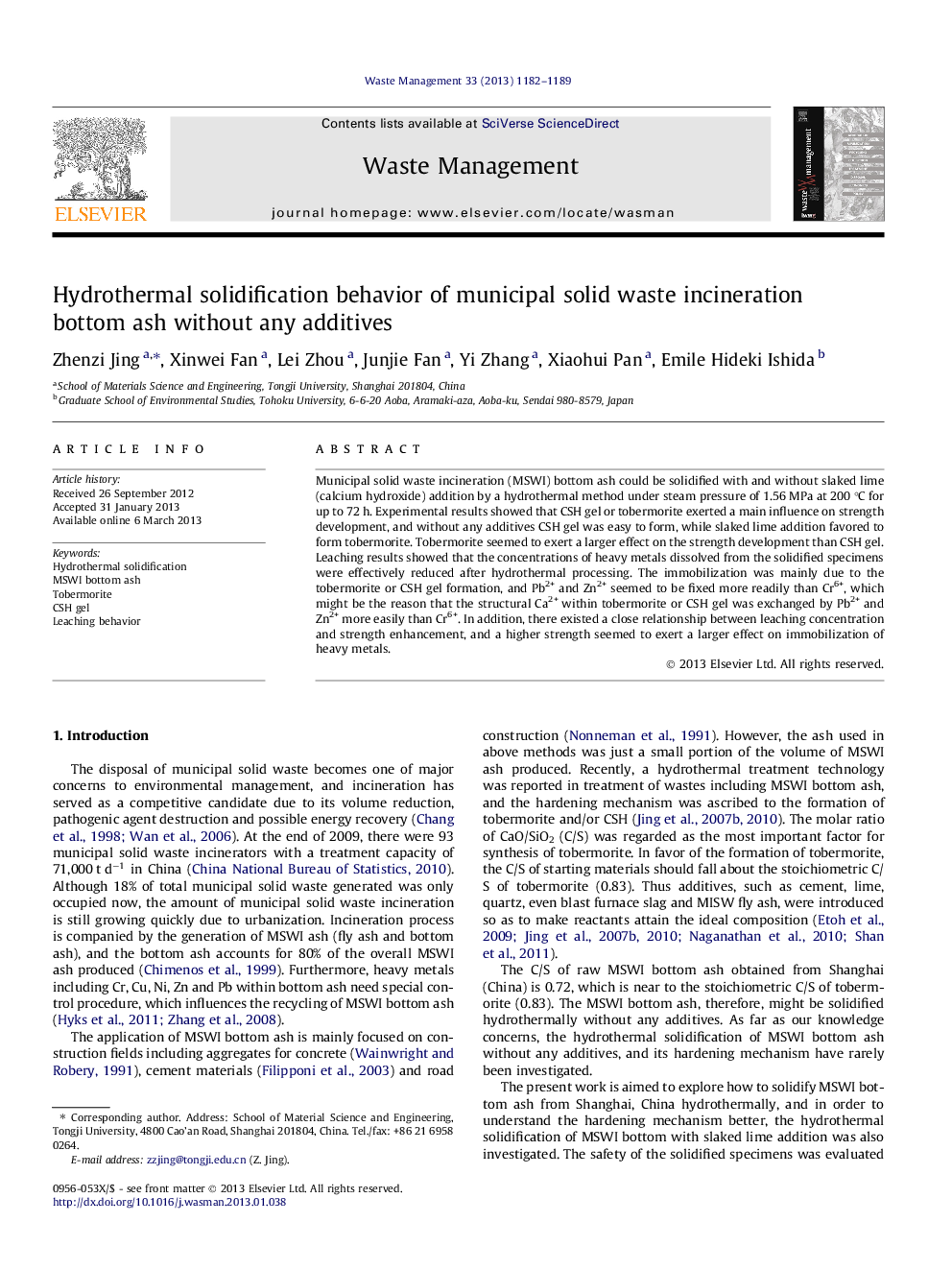| Article ID | Journal | Published Year | Pages | File Type |
|---|---|---|---|---|
| 4471560 | Waste Management | 2013 | 8 Pages |
Municipal solid waste incineration (MSWI) bottom ash could be solidified with and without slaked lime (calcium hydroxide) addition by a hydrothermal method under steam pressure of 1.56 MPa at 200 °C for up to 72 h. Experimental results showed that CSH gel or tobermorite exerted a main influence on strength development, and without any additives CSH gel was easy to form, while slaked lime addition favored to form tobermorite. Tobermorite seemed to exert a larger effect on the strength development than CSH gel. Leaching results showed that the concentrations of heavy metals dissolved from the solidified specimens were effectively reduced after hydrothermal processing. The immobilization was mainly due to the tobermorite or CSH gel formation, and Pb2+ and Zn2+ seemed to be fixed more readily than Cr6+, which might be the reason that the structural Ca2+ within tobermorite or CSH gel was exchanged by Pb2+ and Zn2+ more easily than Cr6+. In addition, there existed a close relationship between leaching concentration and strength enhancement, and a higher strength seemed to exert a larger effect on immobilization of heavy metals.
► MSWI bottom ash could be solidified hydrothermally without any additives. ► Hardening mechanism without additives was due mainly to CSH formation. ► Amount of heavy metals was greatly reduced after hydrothermal treatment. ► Immobilization of heavy metals was mainly due to CSH gel formation. ► A higher strength of specimen exerted a larger immobilizing capability.
